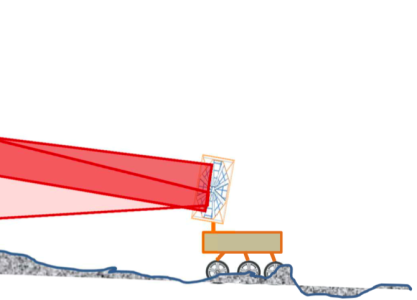Powering rovers by High Intensity Laser Induction on Planets (PHILIP)

The scope of this study was to investigate the possibility of designing a wireless power transfer system from the lander to the rover, based on laser technology, to:
-
Avoid the use of nuclear power systems, such as the plutonium Multi Mission Radioisotope Thermoelectric Generator (MMRTG) accommodated onboard the NASA/JPL MSL Curiosity Rover, due to the constraints imposed by the use of radioactive materials
-
Extend the exploration capabilities to areas in which solar collection is problematic, such as in the Moon PSRs (Permanently Shaded Regions): the exploration of PSRs implies that the batteries – charged via a solar photovoltaic panel – would need to be massive to allow the rover to penetrate deep into the PSR and to frequently get out of the PSR to recharge its batteries
A laser-power-supplied rover, in fact, could penetrate easily up to 15 km into the PSR whilst being constantly supplied with power by the lander. Such laser systems may also have the capability of pointing with centimetre accuracy over several kilometres, ensuring an uninterrupted power supply to the rover from the lander. It has to be remarked that several studies show that a HILPB system has the capability to deliver energy indefinitely to remote vehicles and crafts such as climbers, small demo rovers, kites, quadrocopters, unmanned aerial vehicles, thereby increasing their autonomy and endurance.
